Long-term Kawasaki Ninja 7 Hybrid review update one | Is this the shape of the future?
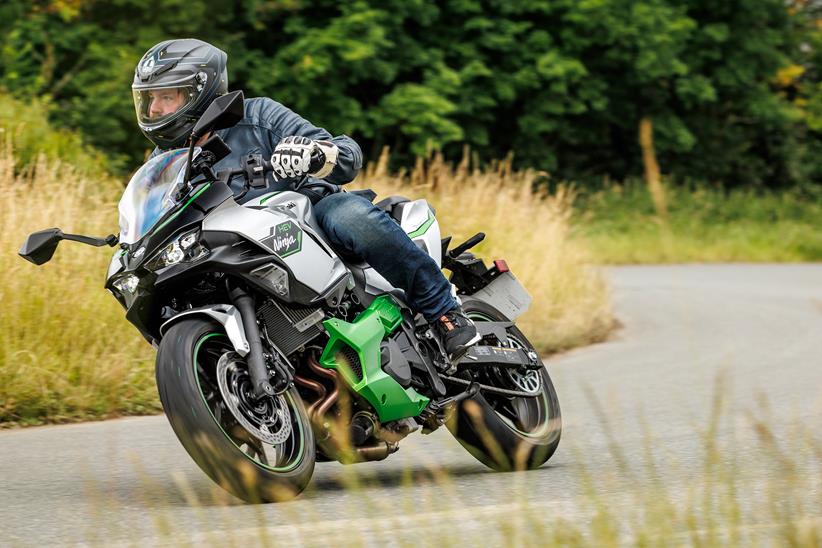
I waved goodbye to the surprisingly likeable Ninja 650 a few weeks back to make room for the bike I’ll be running for the remainder of 2024: the Kawasaki Ninja 7 Hybrid. And I reckon this one’s going to split some opinions…
Read more
- Update two: The Hybrid is the ugly duckling of the Ninja family
- Update three: How far does a Ninja 7 Hybrid really go on a tank
- Update four: Ninja 7 Hybrid vs ZX-10R – marketing fact check!
- Update five: Recall notice halts the test
- Update six: Final thoughts and round-up
First of all, let me explain why I fancied spending some time with it, because I’m aware it’s a bit of a leftfield choice. It’s because I think it’s interesting engineering, and I’m curious to find out whether this could present a viable solution as governments continue their relentless drive towards cutting tailpipe emissions.
On paper it has many of the advantages of an electric bike (admit it: there are some…), including a healthy EV shove at any rpm you like, the facility to run in silence, and the lack of a traditional gear-shift mechanism, which additionally makes this bike among the few that cater for people who struggle with a foot-operated shifter.
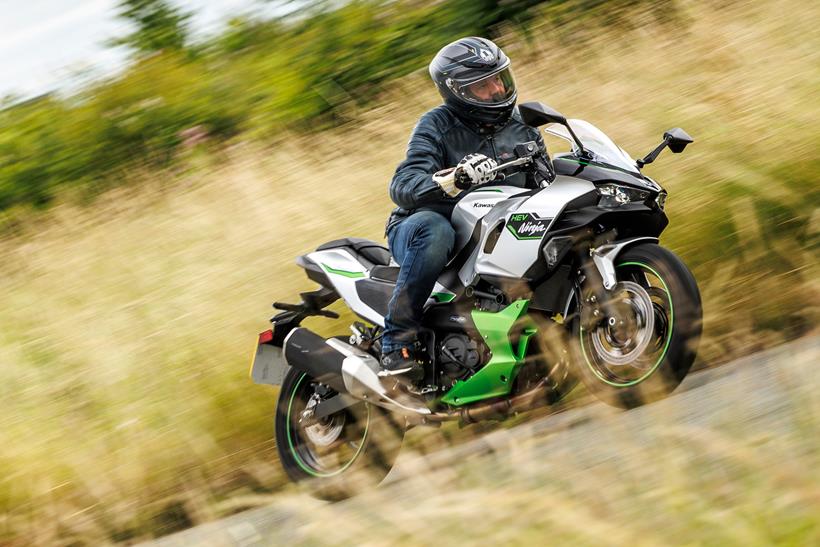
What’s that bike kit?
But worry not, because there’s an internal combustion engine in there too. The dinojuice-fed motor is borrowed from the Ninja 500, and on paper that alone coupled with 227kg of kerb mass doesn’t equate to particularly thrilling performance.
However, the magic is in the electrical assistance, with the electric motor bolted to the back of the parallel twin capable of providing a decent chunk of extra shove on demand, fed by a 13kg lithium-ion battery in the tail.
Kawasaki claim this effectively offers ZX-10R superbike levels of accelerative performance in some situations, so that’ll be a fun comparison to make. It does this through a ‘boost’ function operated by your left thumb, and only when the bike is in the default Sport mode.
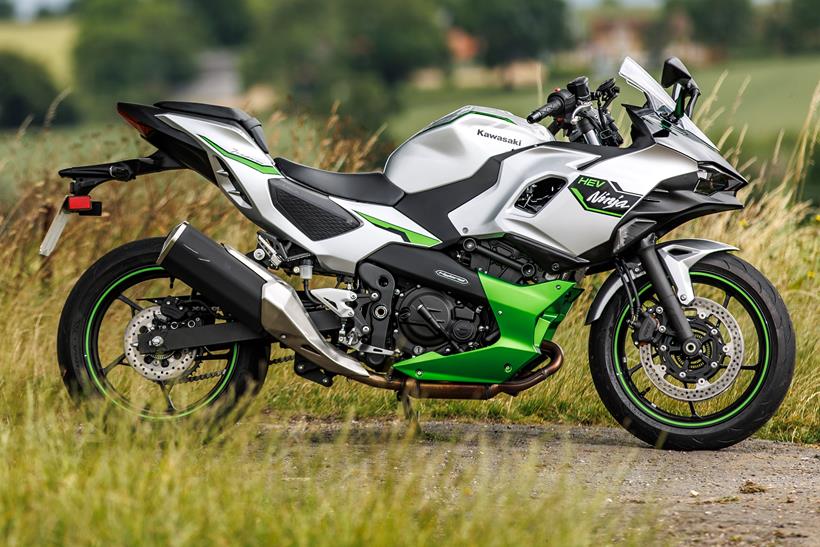
Other modes on offer include an EV-only setting (only available in gears one to four of the six-speed ’box), and an Eco mode that provides electric power at low speeds before the 451cc petrol engine kicks in at around 12mph. You can also choose auto or manual shifting in Eco or EV, but it’s manual only for Sport. Confused yet?
Having ridden the Hybrid for enough miles to get the first service out of the way, I can offer some initial thoughts. In a nutshell, this is a complex machine, and it takes a bit of getting used to. I found it a challenge to coordinate myself when riding in Sport mode to ensure I was shifting correctly, and swapping between modes isn’t intuitive at all, yet.
I’m glad it’s got reverse as part of its ‘walk’ mode, too, because this 227kg monster with its vast 1535mm wheelbase (165mm longer than a Ninja 500) is an absolute pig to move around my garage. That weight and length means the bike feels super-stable in corners, though. It’s just a shame that the rear suspension needs to be so firm to accommodate the battery and electric motor.
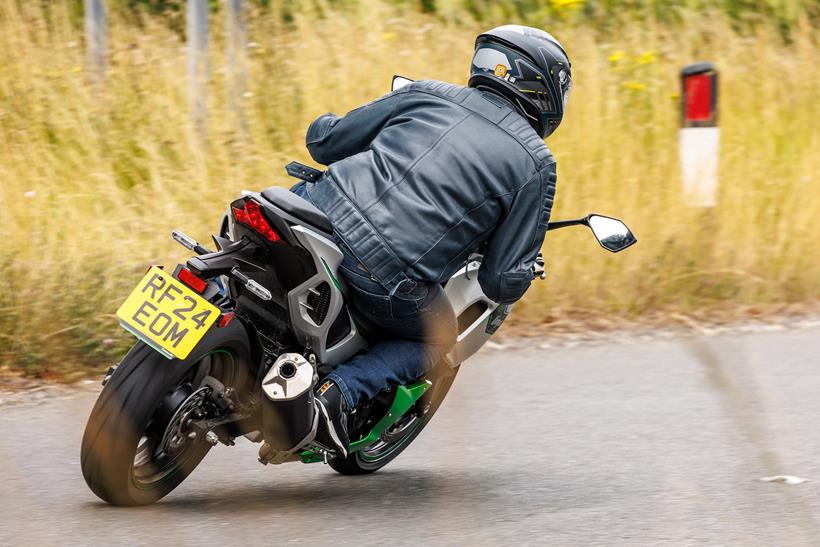
I’m excited to liberate more revs from the engine, because up to now I’ve only really experienced luke-warm performance while the Kawasaki has been running in, and peak system output is at 10,500rpm so I’ve got a way to go yet.
However, the e-boost function is already good fun. It runs for eight seconds and provides a pleasingly eager punch to supplement the buzzy p-twin, firing through gears with an appealing urgency.
And while the performance is fun, the point of the hybrid ultimately is to save fuel, so I’ll be keeping a keen eye on my mpg and range to see if the Hybrid is noticeably better than a petrol bike in this regard – Kawasaki claim running costs of a 250cc bike.
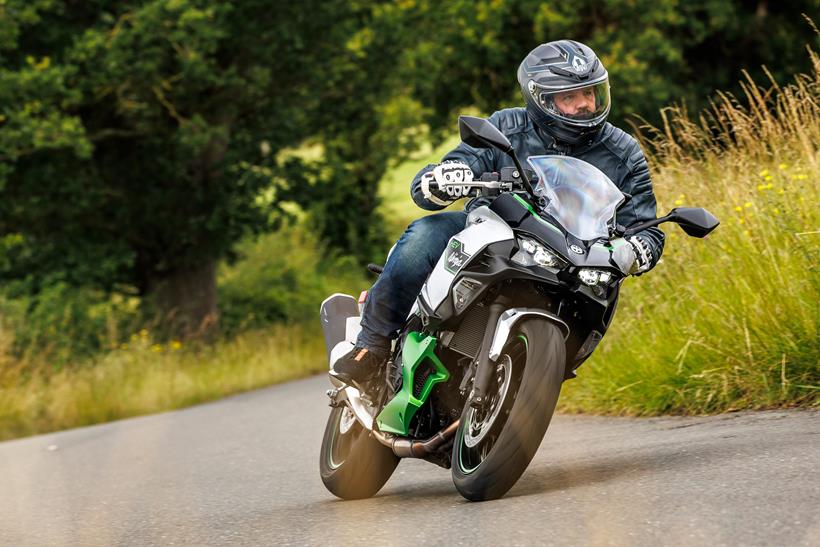
Last year I saw 76mpg from my Honda Transalp on a longer run, so I suppose that’s a benchmark we can work with. However, I’m not planning on doing much hyper-miling either, because this is a sporty-looking motorcycle and it also needs to be fun – especially given it costs a whopping £12k.
It’s going to be an interesting long-term test, I think…





